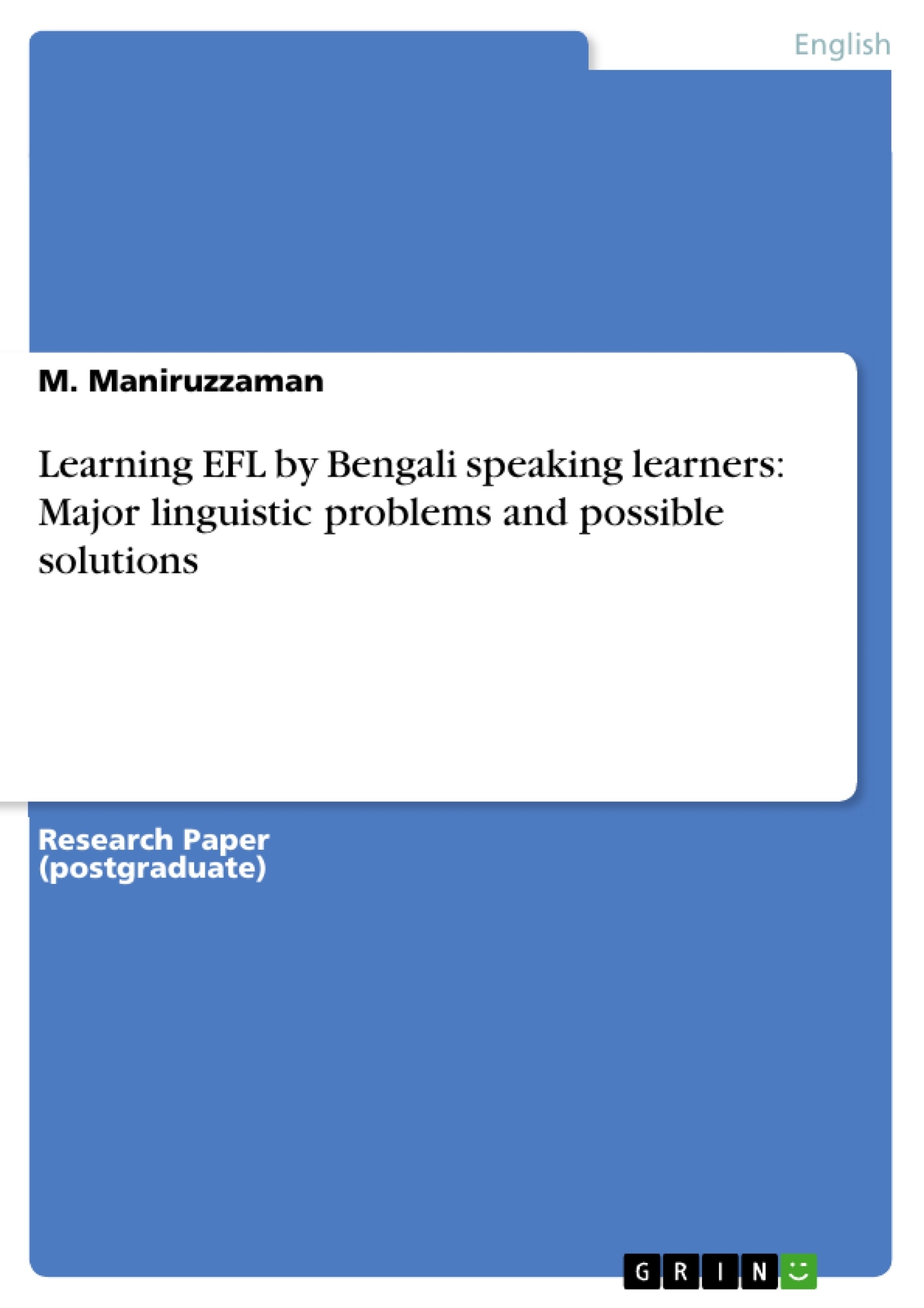Abstract
The second/foreign language learner usually confronts diverse linguistic problems evidently handicapping and hampering his/her learning and eventually negatively affecting his/her general proficiency in the target language. Both as a learner and a teacher-researcher of English as a foreign language (EFL), I have had first-hand experience and the opportunity to observe that the Bengali speaking learner confronts difficulty in learning English pronunciation, vocabulary items, word formation, sentence construction, and conveying meanings through and/or receiving meanings of words, phrases, clauses, sentences/utterances, discourse, and the like. And such problems obviously seriously retard his/her learning of EFL. Hence, the present writer feels justified in identifying the major linguistic problems the Bengali speaking EFL learner encounters as well as in discovering the causes of the problems. Finally, the writer has made a number of recommendations with a view to addressing and lessening the problems, on the one hand, and ensuring the smooth and optimal learning of EFL on the other.
Keywords
Bengali speaking EFL learners, linguistic problems, causes & solutions
Inhaltsverzeichnis (Table of Contents)
- Introduction
- Phonetic and phonological problems
- Monophthongs and diphthongs
- Consonant phonemes
- Stress and intonation
- Morphological and syntactic problems
- Semantic and pragmatic problems
- Conclusions and possible solutions
- References
Zielsetzung und Themenschwerpunkte (Objectives and Key Themes)
This paper investigates the major linguistic challenges faced by Bengali speaking learners of English as a Foreign Language (EFL). The author, a teacher-researcher with firsthand experience in EFL, aims to identify specific problem areas and provide solutions for improving learners' proficiency.
- Phonetic and phonological difficulties in English pronunciation, including vowel sounds, diphthongs, and consonant phonemes
- Challenges in acquiring English morphology and syntax
- Difficulties in understanding and conveying meaning in English, including vocabulary acquisition, sentence construction, and discourse analysis
- The role of mother tongue interference in creating these linguistic obstacles
- Recommendations for addressing and mitigating these issues to enhance EFL learning for Bengali speakers
Zusammenfassung der Kapitel (Chapter Summaries)
The introduction establishes the context of EFL learning, emphasizing the importance of addressing linguistic challenges to enhance proficiency. It highlights the specific difficulties faced by Bengali speaking learners, particularly in areas like pronunciation, vocabulary, and sentence structure.
The chapter on "Phonetic and phonological problems" examines the challenges associated with English pronunciation, focusing on the learner's difficulties with vowel sounds, diphthongs, and consonant phonemes. It explores the impact of mother tongue interference and the role of teaching methods in shaping pronunciation skills.
The chapter on "Monophthongs and diphthongs" delves into the specific difficulties faced by Bengali speakers in pronouncing English monophthongs and diphthongs, highlighting the absence of certain vowel sounds and the differences in vowel length between the two languages.
The chapter on "Consonant phonemes" discusses the challenges encountered by Bengali speakers in articulating English consonants, specifically focusing on plosives and fricatives. It examines the role of aspiration and the lack of one-to-one correspondence between English and Bengali consonants.
Schlüsselwörter (Keywords)
This paper primarily focuses on the linguistic challenges faced by Bengali speaking English as a Foreign Language (EFL) learners. Key themes include phonetic and phonological problems, particularly in pronunciation, vocabulary acquisition, and sentence construction. The influence of the Bengali language on English learning is a central topic, along with potential solutions for addressing these issues.
- Quote paper
- Dr. M. Maniruzzaman (Author), 2010, Learning EFL by Bengali speaking learners: Major linguistic problems and possible solutions, Munich, GRIN Verlag, https://www.grin.com/document/152574




